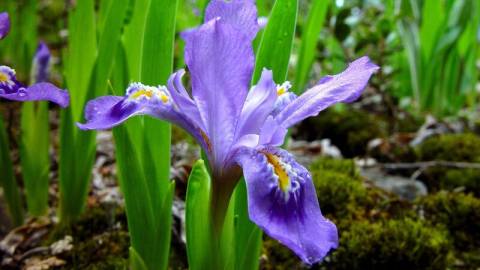
It's Wildflower Season!
Posted: 04/22/25
Wildflower Season in Big Bear Is a Fever Dream You Didn’t Know You Needed!
The Secret Bloom
There’s a moment—just after the snow surrenders to sunlight and before the lake crowd descends—when Big Bear belongs to the petals.
This is the valley’s best-kept secret: a painter’s palette of wildflowers slowly emerging from the mountain floor like whispered stories. Forget Malibu’s coastal super blooms or Joshua Tree’s sun-bleached expanse—this is California’s alpine bloom, subtle but cinematic, secretive yet spectacular. If you know where to look.
Each trail here is its own poem—dotted with dew, scented with sage and pine. Wildflowers don’t just bloom; they unfurl, like lines of verse penned by the mountains themselves. Some rise solo in the sun-dappled quiet. Others crowd the hillsides like festivalgoers in floral formation. And for those who wander deeper, there’s a reward in the rare—a Snowplant piercing pine needles like a blood-red exclamation or a Wild Iris whispering lavender secrets at the edge of a shaded meadow.
In Big Bear, the bloom isn’t just about flowers—it’s a rhythm. It’s the tempo of spring waking up the forest floor. And you, lucky traveler, are invited to dance with it.
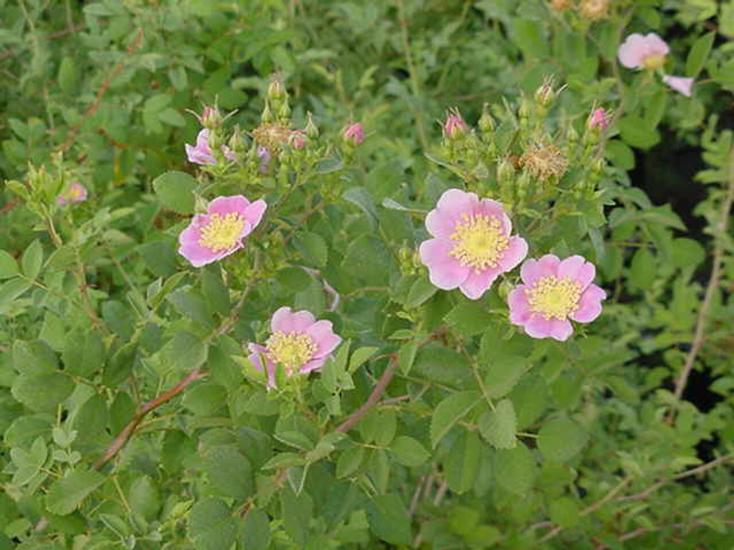
Flower Flash: What to Look For
- Snowplant — Vivid red, alien-like. Rare, sacred, striking.
- Lupine — Royal purples + whites. Roadside royalty.
- Lemon Lily — Delicate, bright, rare. Hides in meadows.
- California Wild Rose — Soft blush, fragrant, unforgettable.
- Fireweed — Bold, pink, post-burn beauty.
- Penstemon — Tubular reds, perfect for close-ups.
- Yarrow — White lace with edge. Quietly essential.
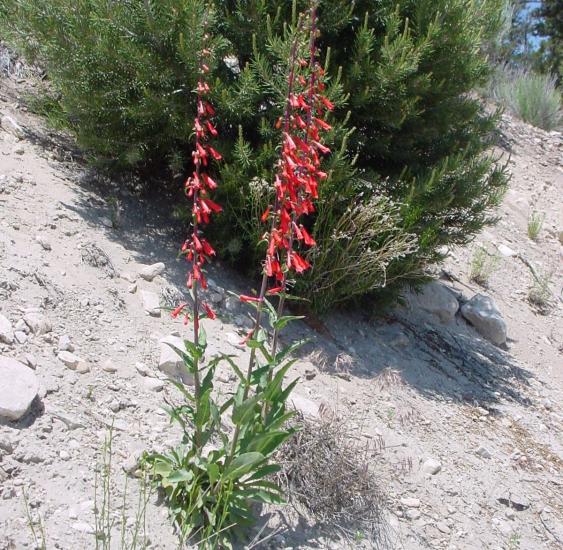
Where Bloom Meets Belonging: Indigenous Roots of Spring in Big Bear
Long before hikers posted sunrise selfies or wildflower chasers lined up for the perfect drone shot, the Serrano people—Big Bear’s original stewards—welcomed spring as a sacred reset. For the Serrano, whose name loosely means “mountain people,” the blooming of wildflowers wasn’t a backdrop—it was a signal.
A signal to gather. To harvest. To return.
Each flower held purpose. Yarrow was medicine, known for its healing properties. Lupine marked the return of the warm winds, a seasonal rhythm keeper. The Snowplant was revered for its rarity, a sacred sign of regeneration after winter’s long silence. The California Wild Rose offered not just fragrance and fruit, but teachings in resilience—growing strong and fragrant even in fractured soil.
In Serrano tradition, spring was more than renewal—it was a time of reciprocity. The mountains gave color, scent, and food; in return, they received reverence. Trails weren’t shortcuts—they were stories passed by foot. Fields weren’t empty—they were full of language.
Even today, indigenous wisdom breathes beneath every pine bough and along every stream bed. You can feel it when the wind shifts. You can see it when a child points to a blossom and a grandparent names it.
To walk among these blooms today is to walk on memory. So go gently. These trails are not just scenic—they’re sacred.
Want to know more? Visit the Big Bear Museum’s cultural center or the Serrano exhibit at the Discovery Center to explore how the original people of the San Bernardino Mountains lived in relationship with the land.
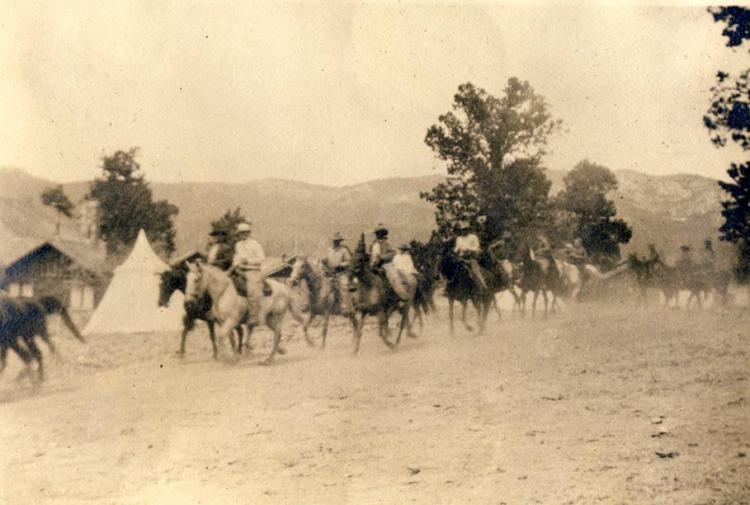
The Art of the Alpine Bloom
Spring in Big Bear isn’t loud. It doesn’t announce itself in influencers or fireworks. It arrives in the quiet turn of a trail, the scent of pine-soaked air, the shimmer of morning mist on Baldwin Lake. It’s in the pop of purple lupine against dirt-stained snow and the surprising lipstick-red of a Snowplant—yes, that’s its real name—rising like an exclamation point from the forest floor.
To chase wildflowers here is to slow down and tune in. It’s a love letter to stillness. A masterclass in soft joy.
But it’s also theater. Big Bear’s bloom is staged in acts—from the opening curtain of Yarrow and early-season Lupine, to the crescendo of Lemon Lily in the meadows. Each week brings a new rotation, a new cast of characters along the trail. Some flowers love attention. Others prefer to whisper from the underbrush.
Come with no agenda except wonder. You don’t have to bag a peak to catch a bloom. Sometimes the best shows happen on a short walk at the right hour. And when the sun hits the petals just so, it’s hard to believe you’re not in some alpine dream painted by nature’s most cinematic hand.
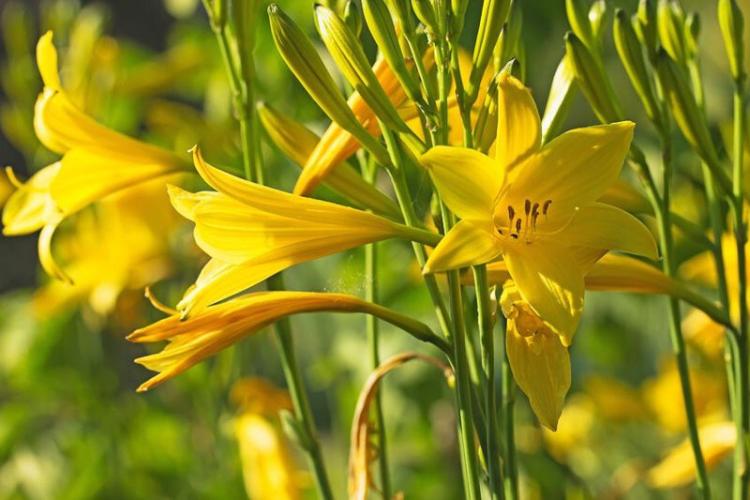
Where to Go & What You’ll See
We’ve mapped out the need-to-know trails below, with the flowers you’ll meet, and how far they are from the Big Bear Visitor Center. Each is reachable by car or Mountain Transit’s free trolley—because this trip should be as unfussy as a picnic in the pines.
Castle Rock Trail
Best for: Indian Paintbrush, Penstemon
Distance: 5 min drive | New parking lot opens Trails Day 2025
A new trailhead lot with 30 spaces, ADA access, restrooms, and bike racks opens this year, eliminating the Highway 18 chaos. Expect a bold splash of red and purple bursting from rocky outcrops.
Bluff Lake Reserve
Best for: Lupine, Lemon Lily, Corn Lily
Distance: 15 min drive or Free Mountain Transit Gold Route to Mill Creek Rd. + 1.1-mile hike
Like stepping into a Wes Anderson film. Sweeping meadows framed by pines, dotted with yellow and violet blossoms. Pro tip: arrive just after sunrise for a cinematic fog layer.
Stanfield Marsh Wildlife Preserve
Best for: California Wild Rose, Yarrow
Distance: 0.4-mile walk from Visitor Center
Boardwalk paths + easy access. Ideal for photographers chasing morning mist and rose petals. A dreamy, accessible bloom spot.
Champion Lodgepole Pine Trail
Best for: Indian Paintbrush, Fireweed
Distance: 20 min drive or Free Transit to Discovery Center + 1.5 mi loop hike
Hike past ancient pines and stumble across fire-kissed wildflower blooms. Worth every step, especially in late May.
Meadow near Timberline Lodge
Best for: Wild Iris
Distance: 10 min drive or Free Transit Green Route to Metcalf Bay + short walk
A hidden lavender field. Perfect for a quiet moment or a blanket picnic. Bring a book or a sketchpad.
Alpine Pedal Path
Best for: Family-friendly lupine views, riverside Yarrow, and wildflower clusters
Distance: 10 min bike ride or quick access via Mountain Transit Blue Route
A paved, lakeside path beloved by walkers, cyclists, and strollers. Wildflowers pop along the shoulder in bursts of color, especially near the lake’s edge.
Boulder Bay Park
Best for: Lupine, Wild Rose, and scenic bloom-backed lake views
Distance: 5–7 min drive from the Visitor Center
Tucked between granite boulders and pine-lined shores, this local favorite offers panoramic backdrops for spring’s best colors. Pack a picnic—or a paintbrush.
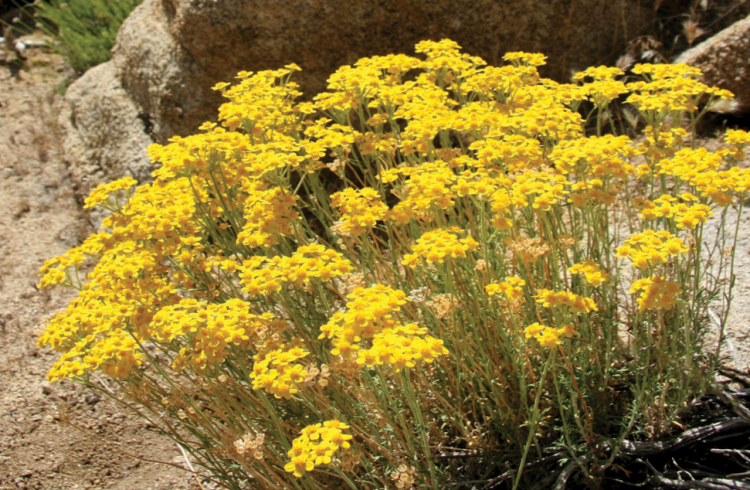
Go Gently
These wildflowers aren’t just pretty faces—they’re part of Big Bear’s living ecosystem. Stay on trail. Don’t pick. Do pause. Snap your shot, breathe it in, and let nature remind you how to feel again.
And as you walk back down the trail, shoes dusted with pine and stories, you’ll know this for sure: the bloom wasn’t the only thing that changed. You did too!